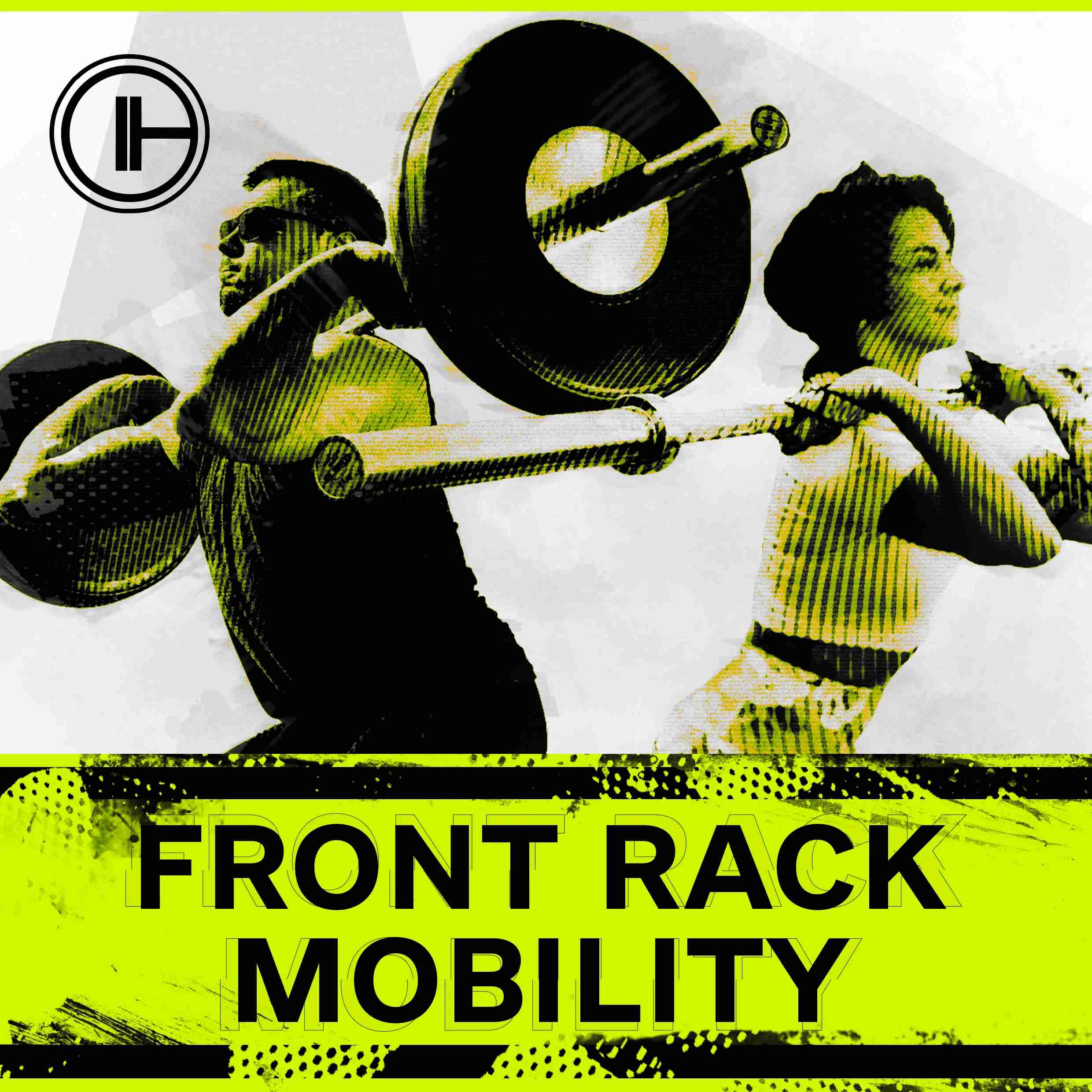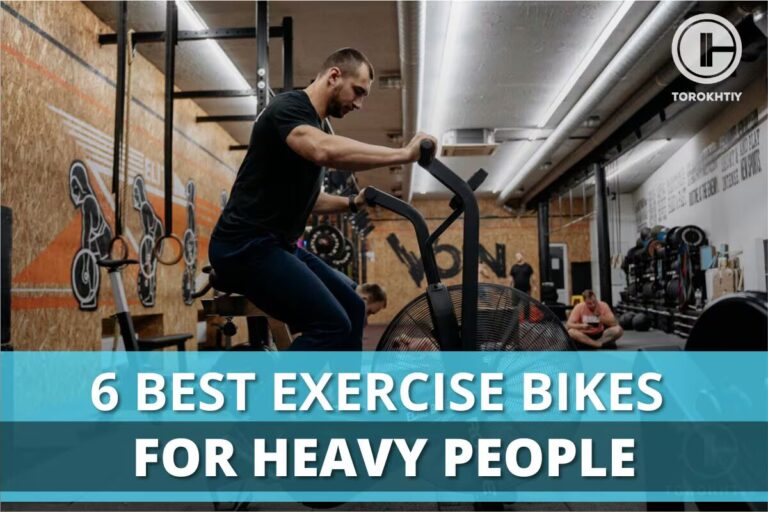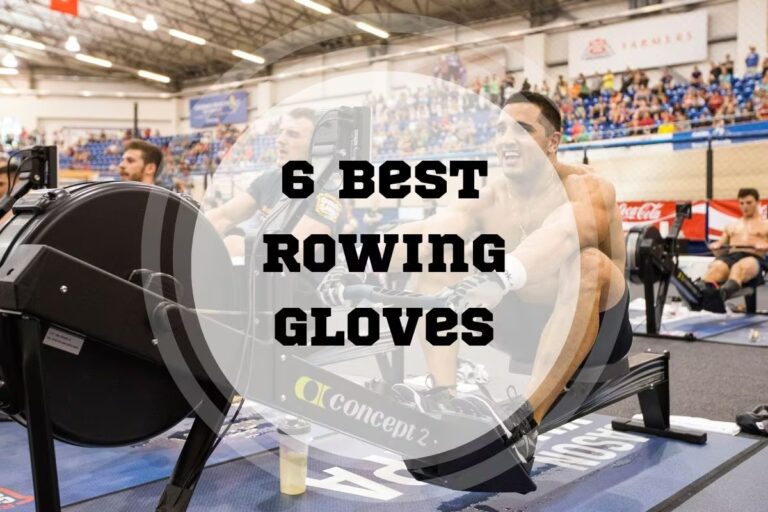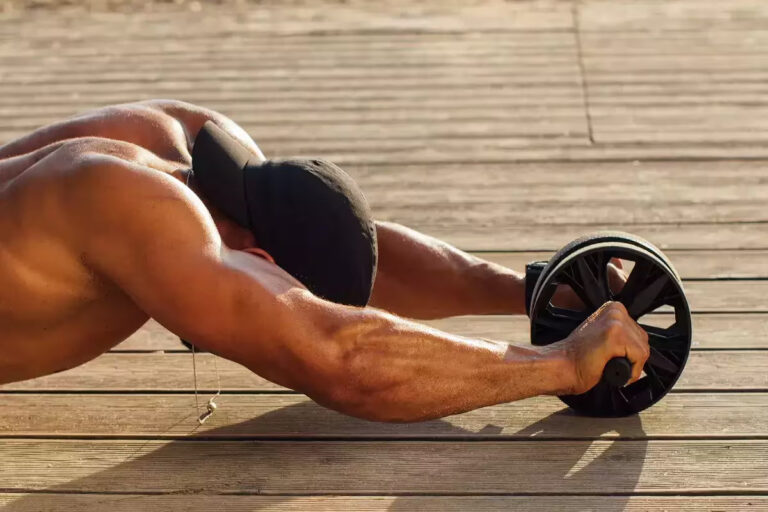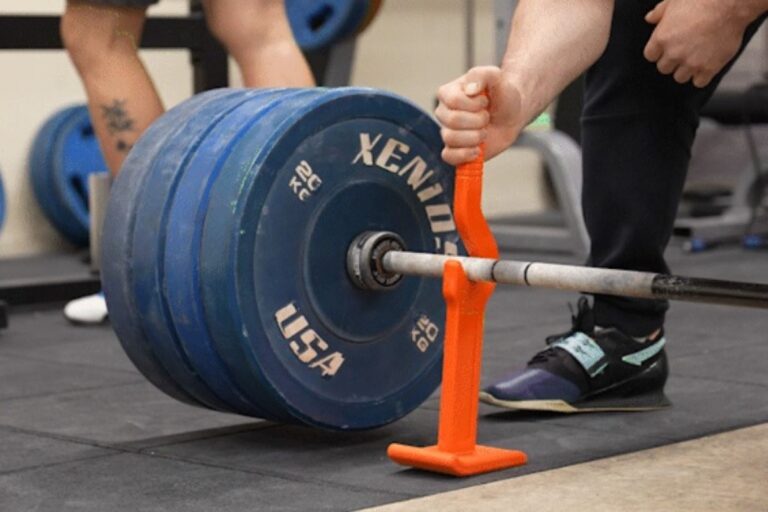Front Rack Mobility: How to Test and Improve
Reviewed by: Oleksiy Torokhtiy (21 years of Oly Lifting experience)
Front rack mobility is one of the most common issues in amateur and professional weightlifting and functional fitness. Solving this problem is crucial for safety and clean effectiveness.
Wrist, elbow, and shoulder joints determine front rack mobility – one of the most essential qualities in Olympic weightlifting and functional fitness. Having these joints mobile and tendons and muscles flexible is a crucial part of the proper clean technique and front squat arm position.
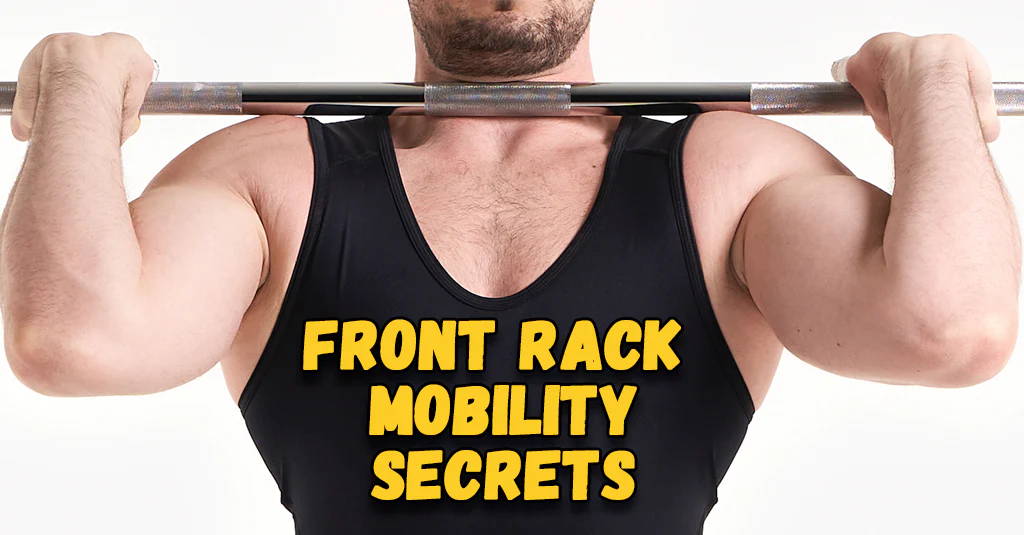
Incorrect front rack position – when the bar pressure is on the wrists instead of shoulders – can lead to joint overload and, as a consequence, chronic inflammation. Furthermore, poor upper body mobility and driving your elbows down during the clean catch are very dangerous.
From my own training experience in the national team, about 5% of athletes were injured or even got wrist fractures. But I have several secrets on how to improve your front rack position mobility.
🔻Front Rack Mobility Program
Calling all athletes: Unlock your best potential with our Front Rack Mobility Program!
Why Choose?
- 💪 Strengthen upper body mobility and joint strength.
- 🚀 Improve Your Squat Form.
- 🥇 Elevate your Clean, Push Press, Front Squat, and more.
- 📈 6 tests to track your progress.
- ⏰ 18 efficient 30-minute workouts.
- 📹 100 video guides.
- 🔒 Lifetime access for success anytime, anywhere.
Don’t wait – unlock your potential today! 🚀
What Is the Correct Front Rack Position?
In order to perform the clean and front squats safely and effectively, you should always maintain the proper front rack position, keeping in mind a few key intricacies. If your mobility level is good, you will feel comfort and power at these angles. Still, this position may be stiff and even a bit painful in case you need further improvement.
If you fail to set up the proper front rack position, you put your joints at risk of serious injuries. The least dangerous consequence of such a mistake is a lot of discomfort. On top of that, you won’t be able to either perform an exercise correctly or lift your dream weight.
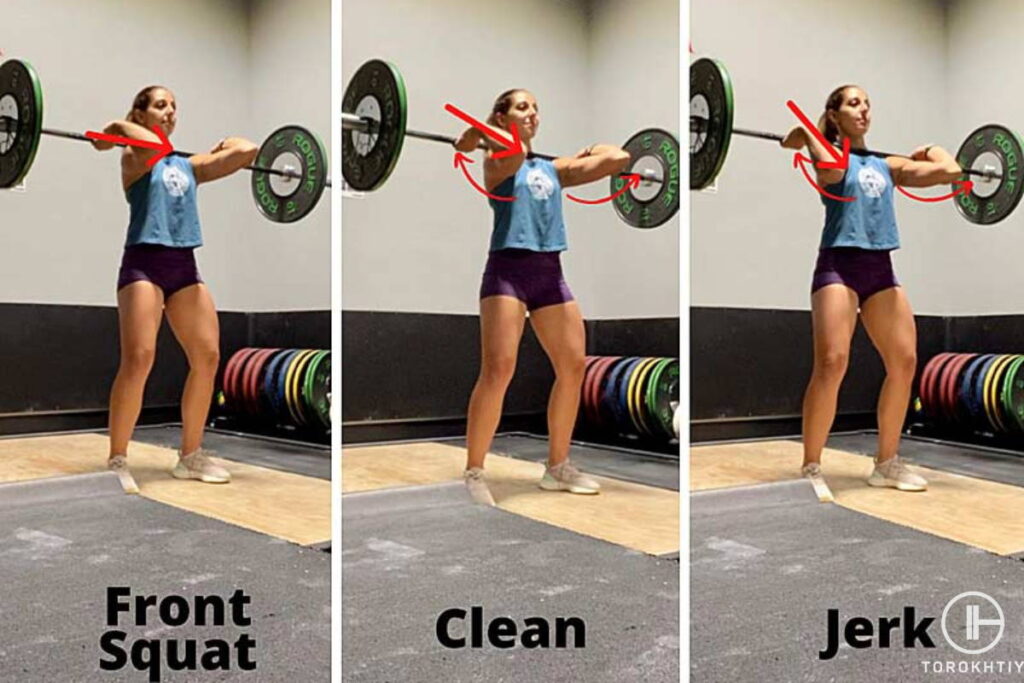
To check if your front rack position is correct, follow all the points that I have listed below:
- the bar lies on your shoulders, not your collarbones;
- the bar is placed in your palms, the fingers cover it;
- your elbows point up and out;
- the shoulders are externally rotated;
- the bar doesn’t interrupt breathing;
- try to squat down: your elbows mustn’t touch the knees.
If all of these requirements are met, congratulations – your front rack position is correct!
How to Test Your Front Rack Mobility?
There are many ways to test your front squat mobility. You can find dozens of exercises that challenge your shoulders, elbows, and wrists separately. Yet, I have one method that mimics the front rack to figure out the level of your mobility in this exact position.
You should just imagine that you are holding a barbell in your hands and copy everything that you do to set up the front rack position. Your palms must be facing up. Stretch the fingers and drive your elbows up just the way you do in the front squat.
If your fingers touch the shoulders in this position, your mobility is great. If you are very close to that but can’t reach the aim, try helping one of your hands out with the other one. If you don’t feel much discomfort, your mobility is satisfactory.
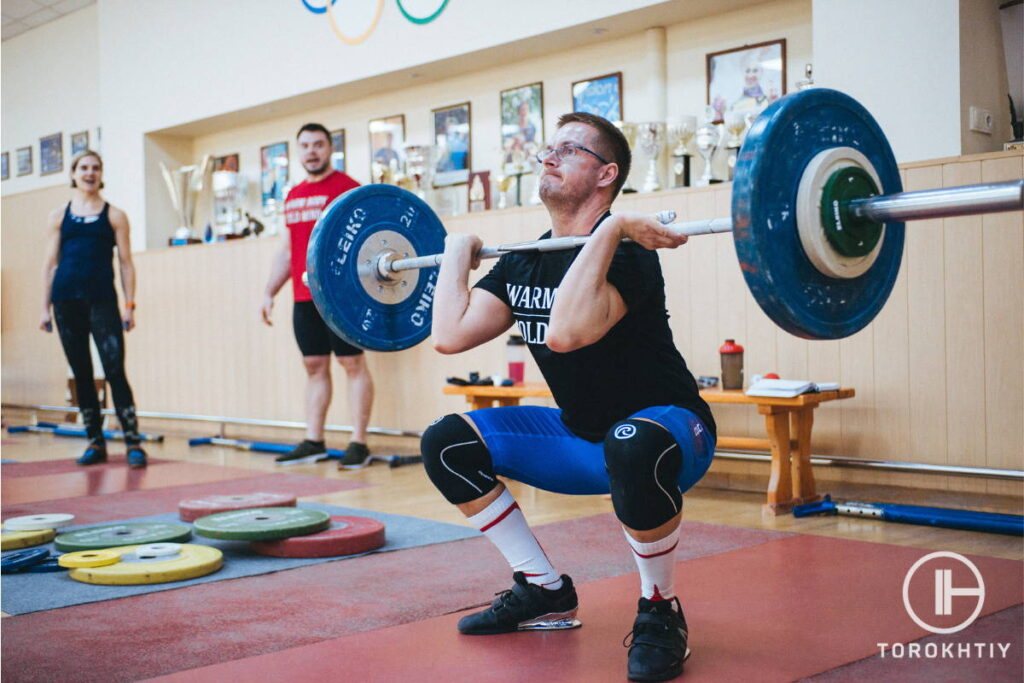
However, if you can’t drive your elbows up and reach the shoulders but feel stiffness or pain, you should work on your joint mobility more.
I also like another test to check your front squat shoulder mobility. Lie on a bench, put your feet on it, and press the lower back to the surface. Stretch your arms up. Start lowering them in the head direction.
If you can’t put your arms in line with your body, you should improve your shoulder mobility. If you can reach just this level, your result is satisfactory, and if you can go even lower, your mobility is optimal.
You can do a similar test in front of a wall. Sit on the ground, cross your legs, and press your lower back to the wall. Hold a PVC pipe with your hands slightly wider than your shoulders. Stretch the arms in front of you and raise them upward till you touch the wall. Keep the arms straight all the time.
If you can reach the wall, you are good at that! You can also hold the pipe with your palms facing up, it will test your external shoulder rotation. This variation is far more challenging, so it’s okay if you can’t touch the wall.
If you strive to improve your front rack mobility and get down to that right away, be sure to complete a test before your start. Later, as you keep working, check your level regularly with the same exercise. It will help to track your progress.
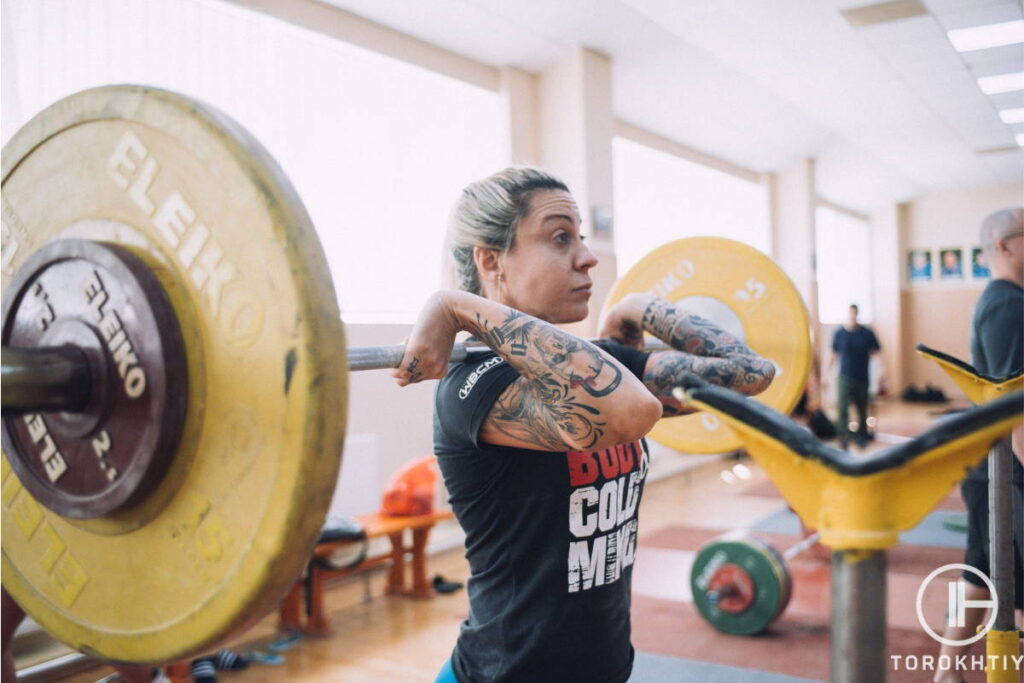
How to Improve Front Rack Mobility?
Please keep in mind that pre-workout stretching and activation are a very important part of a training session as well as the post-workout routine. Weightlifting dynamic exercises require muscle elasticity, joint mobility, and intramuscular coordination.
Using auxiliary exercises will definitely help you with solving and developing front rack mobility. Today, I would like to share with you 4 of the most effective specific exercises which will help to develop front rack position mobility and solve this problem.
Resistance Band Elbow Stretch
Pick the resistance band from 75-175 pounds, usually purple or green. Place the rubber band on the mid palm, the elbow on the bar on the chest level and gently step on the rubber band with your foot to add more tension to stretch your elbow and wrist joints.
Hold it for up to 20 seconds and repeat a few more times. Rotate the arm gently from side to side. Feel free to warm up with this drill before C&J exercises and use it as a post-workout routine as well.
PVC Elbows Rotation + Tall Muscle Clean
This exercise is a must-have warm-up drill before any main clean or front squat exercise. Working with a light stick will help to activate muscle feeling and adjust correct positions for further dynamic work.
Perform the tall muscle clean and fix a PVC pipe in the front rack position. Drive your elbows back and then forward again, rotating a PVC. Later, when you will confident enough, you can switch a pipe to a barbell.
Work at a slow tempo, focus on movement quality. During the tall muscle clean pay attention to elbows up movement as close as possible to the trunk. You can also use this drill during technical sessions before starting to work with a bar.
Shoulder External Rotation Stretch With PVC
Grab a PVC pipe with one hand and place it behind the biceps. Grap the lower end with the other hand and pull it upward, putting desirable tension. Do this exercise for 15-20 seconds for 2 rounds as a warm-up before clean and jerk training.
Using this simple front rack stretch with a PVC pipe can definitely improve your range of motion. You can increase overall upper body mobility and prevent injuries when doing this stretch regularly.
Front Squats With Straps
The main idea of front squats with lifting straps is the development and correction of the front rack position throughout the whole exercise. Be ready for some stretching and discomfort in the beginning. But trust me – very soon this life hack will definitely improve your front rack mobility.
My advice for athletes with poor front rack mobility is to front squat with straps only with light weights up to 2-3 sets as a warmup before the clean or front squat. For advanced weightlifters with optimal mobility, it is ok to include straps into working sets from time to time.
FAQ
How Long Does It Take To Improve Front Rack Mobility?
If you work on front rack mobility every workout, you will see a significant improvement after a few weeks. It depends on your initial mobility level and body peculiarities, too. Still, you may feel a difference right at the first workout if you complete the proper warm-up complex that I suggest.
How Do You Keep Your Elbows up During a Front Squat?
In order to keep your elbows up during a front squat, you should have a sufficient front rack mobility level. It depends on your shoulder, elbow, and wrist mobility as well as tendon and muscle flexibility.
What Is the Best Grip for the Front Squat?
If you are an Olympic weightlifter or fitness athlete, the front rack grip is the best option for you, since it is the grip used for the clean. If you are into fitness or bodybuilding and don’t need significant front rack mobility, you can use the cross-arm grip – a less demanding option.
Conclusion
Front rack mobility is all about your security, proper technique, and effectiveness. It determines the correct clean catch and front squat positions, thus, is a must-have quality for productive and safe training, especially in Olympic weightlifting and functional fitness. Perform all the exercises above and feel the difference!
Do you struggle with the lack of front rack mobility? Share your experience in the comment section!
References:
- ELBOWS ROTATION // Torokhtiy: https://torokhtiy.com/blogs/warm-body-cold-mind/elbows-rotation
- INJURIES // Torokhtiy: https://torokhtiy.com/blogs/warm-body-cold-mind/injuries
- MUSCLE WORK IN WEIGHTLIFTING // Torokhtiy: https://torokhtiy.com/blogs/warm-body-cold-mind/muscle-work-in-weightlifting
- WARM-UP // Torokhtiy: https://torokhtiy.com/blogs/warm-body-cold-mind/warm-up
- Cool Down // Torokhtiy: https://torokhtiy.com/blogs/warm-body-cold-mind/hitch
- Clean vs Power Clean: Difference Explained // Torokhtiy: https://torokhtiy.com/blogs/warm-body-cold-mind/clean-vs-power-clean
- 7 Best Lifting Straps in 2023 // Torokhtiy: https://torokhtiy.com/blogs/reviews/best-lifting-straps
- FLEXIBILITY, MOBILITY & WEIGHTLIFTING // Torokhtiy: https://torokhtiy.com/blogs/warm-body-cold-mind/flexibility-mobility-weightlifting
Why Trust Us?
With over 20 years in Olympic Weightlifting, our team does its best to provide the audience with ultimate support and meet the needs and requirements of advanced athletes and professional lifters, as well as people who strive to open new opportunities and develop their physical capabilities with us.
By trusting the recommendations of our certified experts in coaching, nutrition, dietology, and sports training programming, as well as scientific consultants, and physiotherapists, we provide you with thorough, well-considered, and scientifically proven content. All the information given in the articles concerning workout programming, separate exercises, and athletic performance, in general, is based on verified data. We ensure that you can rely on our professionals’ pieces of advice and recommendations that can be treated as personalized ones which will benefit you and fully meet your needs.
The product testing process is described in more detail here
Author: Sergii Putsov
Head of Sport Science, PhD
Best Results: Snatch – 165 kg,
C&J – 200 kg
Sergii Putsov, Ph.D., is a former professional weightlifter and National team member, achieving multiple medals in the 94 kg weight category at national competitions. With a Master’s degree in “Olympic & Professional Sport Training” and a Sport Science Ph.D. from the International Olympic Academy, Greece, Sergii now leads as the Head of Sport Science. He specializes in designing training programs, writing insightful blog articles, providing live commentary at international weightlifting events, and conducting educational seminars worldwide alongside Olympic weightlifting expert Oleksiy Torokhtiy.
Reviewed by: Oleksiy Torokhtiy
Olympic Weightlifting Champion
Best Results: Snatch – 200 kg,
C&J – 240 kg
Oleksiy Torokhtiy is a professional athlete boasting 20 years of experience in Olympic weightlifting. With multiple European and World titles under his belt, he has showcased his prowess in two Olympic Games (Beijing 2008 and London 2012). Upon concluding his illustrious career, Oleksiy dedicated himself to coaching. By 2022, he had conducted over 200 weightlifting seminars worldwide. He is the visionary behind an international sportswear and accessories brand known for its motto, “Warm Body Cold Mind.” Additionally, he is an esteemed author and the creator of a series of training programs and eBooks.

